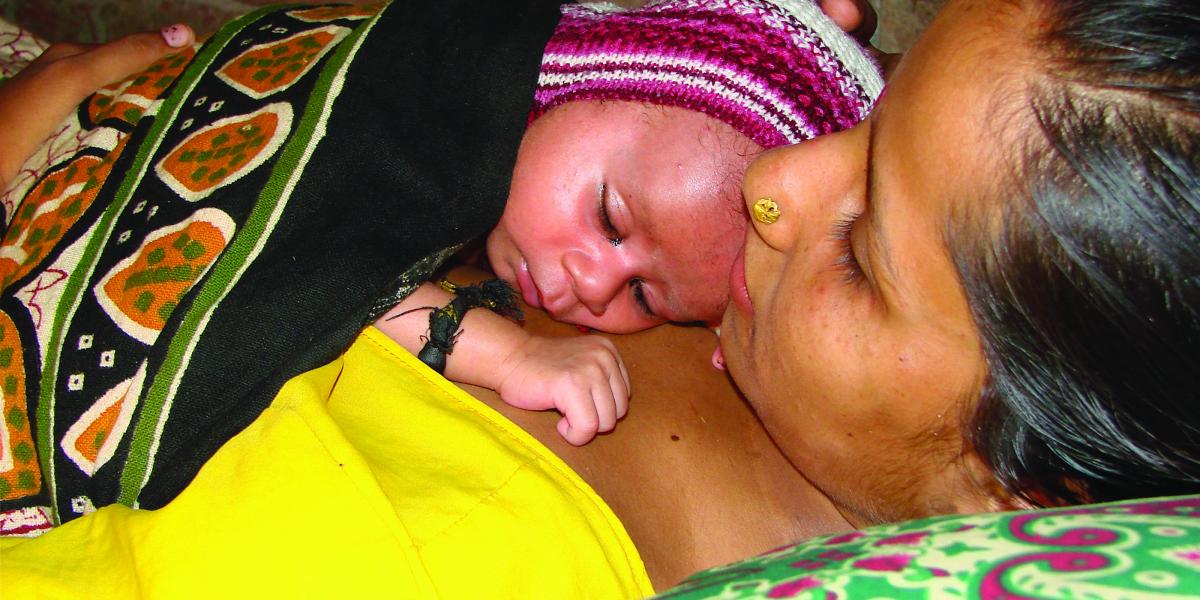Simple Steps Save Newborn Lives in India
How do you teach the rural poor of India public health lessons that will reduce the infant mortality rate? One way is to convince them to handle their newborns like curdled milk, according to a team of International Health researchers led by Gary Darmstadt, MD, MS, and Vishwajeet Kumar, MBBS, MPH.
The researchers set out to see whether simple, low-tech interventions identified by the Lancet Neonatal Survival Series in 2005 could be effective in a poverty-stricken region in the Raebareli District of Uttar Pradesh.
"[The Lancet series] suggested there was a substantial potential for communities and parents to do fairly simple things to save the lives of newborns," says Darmstadt, an associate professor and the director of Johns Hopkins International Center for Advancing Neonatal Health.
The results were extremely encouraging. In the communities where the initiative was implemented, neonatal mortality rates dropped by half, from about 80 newborn deaths per 1,000 live births to about 40 per 1,000 (which is still eight-fold the rate seen in the United States).
In the region targeted by the Bloomberg School, most births take place at home, and people have little access to modern medical care, Darmstadt says. "These were traditional villages. They suffered from poverty, from a lack of resources."
Research team members—including local social workers, medical anthropologists and others who understood the culture—investigated the way births were handled and identified what they thought were the key contributors to newborn deaths during the first month of life. Then they recruited community workers and worked with them to shape messages that would be accepted by the community.
One crucial behavior the team set out to promote was hand washing before delivery. Initially, the practice was counterintuitive for many villagers. Unfamiliar with germ theory, they were more likely to wash their hands after the birth than before.
So the research team turned to cooking. Most local people had seen curd made from milk in the family home. Experience had taught them that to keep the curd from going bad, they had to wash their hands and sterilize their implements in the fire.
"The message became, 'In the same way you want to avoid spoiling curd, you don't want to spoil the baby. Do the same things you do to make curd.' That was something they could readily relate to," Darmstadt says.
Another important lesson involved the crucial moments just after birth. Many believed that the mother's life was at risk until the placenta was expelled; they worried that the placenta could rise to the chest and choke her. As a result, the baby would be ignored. Still wet, and not wrapped up, the baby could become chilled and its body temperature might start to go down. To counter this, community workers urged that there be a person in the birth room whose primary responsibility would be the newborn.
When it came to breastfeeding, families often delayed beginning until a day or two after birth, waiting for a priest to conclude that the horoscope was auspicious. The delay in feeding would weaken the baby and increase its exposure to other liquids—and possibly foods—that could be contaminated and lead to infection. Mothers, frustrated at being unable to breastfeed, would often avoid close contact with the hungry baby.
So the community workers talked to some of the priests and convinced them of the importance of immediate breastfeeding and skin-to-skin contact. With the priests on board, families bought into the practice.
Though the team is still completing analysis of its study, Darmstadt says initial findings are promising: In addition to cutting newborn mortality by half, mortality for mothers also went down. Skin-to-skin care increased from about 2 percent to universal, and initiation of breastfeeding on the first day of birth jumped from 21 percent to 75 percent.
One sign of how well the message has gotten through: Villagers have incorporated the public health messages into folk songs.
